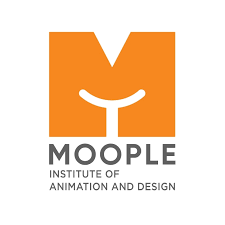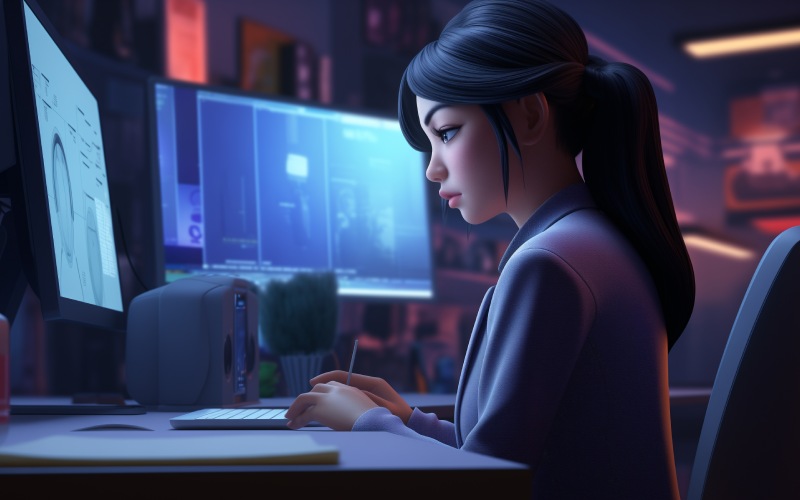Sit in a dark theatre, eating popcorn and watching a superhero flying through the air or a giant dragon shooting fire. Your heart races, your eyes are wide with wonder, and you’re left asking, “How do they create this to look so real?” That’s the magic of VFX, or visual effects, that makes impossible worlds come alive on the big screen. We’ve always been impressed by how films fool us into thinking the impossible. Today, this blog will show you behind the scenes.
Let’s get into how VFX scenes are made in films, and we promise you, by the end of it, you’ll be eager to learn how to create this magic yourself!
What Is VFX?
VFX is short for visual effects. It’s a painter’s brush for VFX filmmakers. They employ it to produce things that cannot be shot in the real world. Consider a spaceship navigating through space or an alien invasion of a city. These do not exist in reality, yet visual effects in filmmaking ensure they appear real. It’s all about matching computer-generated imagery with real scenes to deceive your eyes.
Whether it’s a small spark or a huge explosion, VFX artists are the ones who add that little bit of magic to films.
What is the importance of VFX?
VFX is the pulse of contemporary films. Without it, we wouldn’t be able to see dinosaurs attacking humans in Jurassic Park or heroes fighting in Avengers. It allows filmmakers to narrate stories beyond possibility. VFX also saves time and money.
Rather than constructing an actual castle, it can be constructed virtually by artists. It makes risky scenes safe. There isn’t any need to leap from an actual cliff! It catches your eye and puts you inside the story. Who does not enjoy that excitement?
How Are VFX Scenes Created?
Making VFX scenes is like baking a cake. It requires planning, collaboration, and a whole lot of creativity. Let’s divide it into easy steps:
Dreaming Up the Idea
All VFX scenes begin with a grand vision. The writers and directors determine what they want to display. Perhaps it’s a superhero avoiding bullets or an alien world full of strange life forms. They make drawings known as storyboards to map out each scene. It’s similar to sketching a comic book before shooting. This process gets everyone hyped about what can be achieved.
Planning Every Detail
In the next step, the VFX crew creates a blueprint. They determine what they need to use, how long they have, and how they can make it look great without going over budget. They consult with the director to ensure their vision matches the movie’s. It’s like planning an epic bash. You want everything to work perfectly.
Filming with Tricks
Once production starts, the actors are typically in front of a green screen. Why green? Because it’s a simple colour to edit out and then substitute with something—like a jungle or city. At other times, the actors may put on special dotted suits that catch their body movements. It assists in building digital characters, such as the Hulk or Na’vi of Avatar. It is so cool watching how one tiny set turns into something huge.
Building Digital Worlds
Now the real fun starts! VFX artists employ computers to make things that don’t even exist. They construct 3D models of monsters, spaceships, or cities. For instance, in The Matrix, they employed 120 cameras and filmed Neo dodging bullets in slow motion. That iconic “bullet time” effect blew everyone’s minds! Each tree, rock, or cloud is individually designed to appear real.
Mixing It All
This process is referred to as compositing. Artists merge the actual footage with the computer-generated material. They include shadows, lights, and colours to ensure everything blends. Think of putting a sticker on a photograph. It must appear as if it’s there naturally. The blue Na’vi in Avatar seemed so real because the artists combined actors’ movements with digital creations. It’s like putting a puzzle together to fool your eyes.
Adding the Final Sparkle
Once all this is mixed, artists refine the scene. They put on sounds, adjust colours, and ensure it’s alive. Perhaps they include smoke in an explosion or rain in a stormy weather scene. This process makes you gasp when viewing the end movie. It’s like icing on the cake. It’s got to look flawless.
Checking and Fixing
The cast keeps watching the scene repeatedly. They correct small errors, such as a shadow appearing where it shouldn’t. Directors provide feedback to ensure it’s just what they envisioned. It’s backbreaking work, but it’s all worth it when the crowd applauds
Sharing the Magic
Lastly, the scene is set for the film. When you see it, you don’t even realise the hours of hard work. That’s the magic of VFX. It feels so real that you forget that it’s not real. From The Avengers to Baahubali, visual effects in filmmaking make every second unforgettable.
Isn’t it wild to think about all the steps? It’s like a huge adventure where artists, computers, and imagination collide to produce something that drops your jaw.
Why Should You Pursue a VFX Course?
Now that you’ve learnt how VFX happens, imagine yourself making those jaw-dropping scenes! A VFX course, such as the BSc in VFX filmmaking, is your pass to this exciting world. Here’s why you should learn:
- Be a Part of Big Films: VFX is a big business, and films like Brahmastra require skilled artists. You might work on blockbusters and have your name in the credits!
- Learn Awesome Skills: You’ll become an expert at tools like Maya and Nuke, which are used by professionals globally. It’s like learning to paint using a computer.
- Good-paying Jobs: VFX artists are in demand, not only in India but the world over. You could be well paid doing what you enjoy.
- Freedom to Be Creative: If you enjoy imagining new worlds, VFX allows you to create them. It’s playtime every day!
A VFX course isn’t all about studying. It’s about making your passion your profession that inspires people to say, “Wow!”
Why Learn VFX at Moople Academy?
If you’re ready to jump into VFX, start with Moople Academy. Our VFX courses will make you a star. Here’s why Moople Academy is different:
- Hands-On Training: You won’t be reading books—you’ll be working on actual projects, such as explosions or character animation. It’s learning through action!
- Expert Teachers: Our instructors are experts who’ve practised in the business. They’ll teach you tricks to help you stand out.
- Great Tools: You can work with industry-leading software such as After Effects and Cinema 4D. It’s as if you get the coolest toys to play with!
- Job Assistance: We at Moople will assist you in getting jobs once you’re done. We match you with studios that need new talent.
- Fun Vibes: The sessions are fun, and you get to meet like-minded folks who share your passion for VFX. It’s like becoming part of a dreamer’s club!
Moople Academy doesn’t only show you how to do VFX. We introduce you to a profession where you get to make magic daily.
Conclusion
Wow, what an adventure through the universe of VFX! VFX artists are the unsung heroes of filmmaking, from sketching ideas to creating virtual dragons. They lead us to believe in the impossible, and now you know their secret. If you’ve ever fantasised about creating your movie magic, don’t wait any longer.
A BSc in VFX filmmaking at Moople Academy may be your key to making scenes that get hearts racing. Join today at Moople Academy and begin bringing your imagination to life! Believe us, the world is waiting to witness what you can do.
FAQs
Q1. Can I study VFX even if I’m not talented at drawing?
Absolutely! VFX is not just about drawing. It’s about computer usage. You’ll be taught software that makes it easy to create, and Moople’s instructors will walk you through it step by step.
Q2. Do I need a high-end computer for a VFX course?
Not necessarily! Moople Academy gives you access to computers with the software you require. You just bring the enthusiasm to learn.
Q3. How long does it take to become a VFX artist?
With Moople’s curriculum, you can begin creating within a few months. A BSc in VFX requires four years, but you’ll be working on awesome projects immediately.
Q4. Will I be able to work on actual movies?
Absolutely! Moople assists you in developing a portfolio, and our job assistance links you to studios. You might be part of the next blockbuster!

